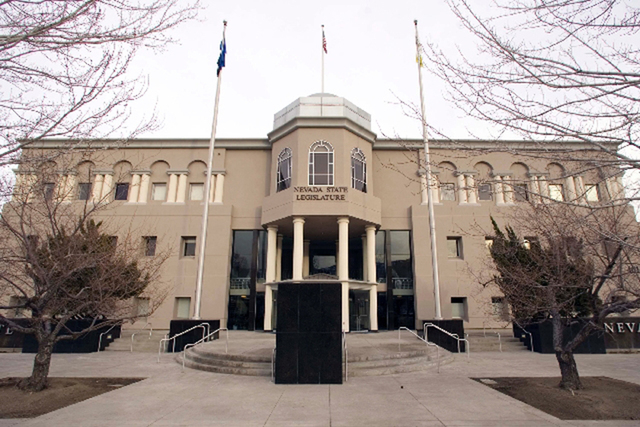PERS points out weaknesses in Nevada think tank’s retirement study

CARSON CITY — A retirement system official said Thursday a report showing that some public employees who retire collect more in pension benefits than they did while working was based on less than 2 percent of beneficiaries.
The analysis also does not reflect changes to the retirement plan made in 1985 that reduced pension payouts, said Tina Leiss, executive officer of the system.
The conclusions in the report issued by the Nevada Policy Research Institute, a conservative think tank based in Las Vegas, do not account for the vast majority of the members and retirees of the Public Employees’ Retirement System, she said.
“It appears that the analysis was based on a review of 790 retirees whereas there are currently 49,179 retirees (not including survivors and beneficiaries) receiving benefits from the system,” Leiss said. “Over the last 3 fiscal years, approximately 12 percent of those retiring in those years did so with 30 or more years of service while approximately 88 percent did so with less than 30 years of service.”
NPRI officials have used the analysis as evidence of the need for reforms to the public employee retirement system, but Leiss said the analysis is not representative of the benefit structure in place for almost ail current members of the system. Benefits were reduced in 1985 from 90 percent to 75 percent of average compensation for newly hired public employees, she said.
There are other factors not recognized in the analysis that could explain some of the higher pension amounts, Leiss said in an emailed response seeking comment.
The NPRI analysis found that in the case of local government workers from Clark County, Las Vegas and several other entities, retiring with 30 or more years of service meant a pay increase. On average, the 263 local government employees reviewed for the report took in 100.59 percent of their base pay in retirement payouts.
For 84 police and firefighter retirees with 30 years or more, pensions averaged 114 percent of base pay.
The analysis showed that other employee groups, including teachers, were below, some well below, their 100 percent of base pay.
The analysis said that pensions can end up higher than actual base pay because other forms of compensation can be counted toward retirement, including call-back pay, longevity and shift differential, but not overtime.
The think tank is advocating that the 2015 Legislature reform the retirement system to move public workers from the current “defined benefit” pension plan to a hybrid plan that would include a “defined contribution” element that carries no liability for government agencies or taxpayers.
Victor Joecks, executive vice president at NPRI, said PERS likes to use averages to make its case, which is why the analysis looking at those retiring with 30 years of service is so important. Those with 30 years or more can begin collecting their pensions in their 50s while private-sector workers have to put in much more time to collect Social Security, he said.
Public employees in PERS do not participate in Social Security.
“What it shows is the PERS system has a big inequity in it,” Joecks said. “If you only work for five years or 10 years it’s not a very good system for you.”
Including a 401(k) type of element to the public pension plan would work better for younger workers who don’t plan to make a career in public service because it stays with the employee, Joecks said.
While most public employees will see a pension of no more than 75 percent, the reality is that 75 percent isn’t based on base pay, but “average compensation” which can be inflated with longevity and call-back and other types of compensation, he said.
“So the cap loses a lot of its meaning,” Joecks said.
Leiss also said the plan’s long-term unfunded liability, which is $10.4 billion under applicable accounting standards and $12.5 billion under the applicable funding policy, is a decrease from the prior year.
“The system has a sound funding policy in place that takes into account the demographics associated with all members and retirees of the system, not just 2 percent of the system, and the employers and employees are paying the contributions determined by the independent actuary to fund the system as a whole,” she said.
Contact Sean Whaley at swhaley@reviewjournal.com or 775-687-3900. Find him on Twitter: @seanw801.